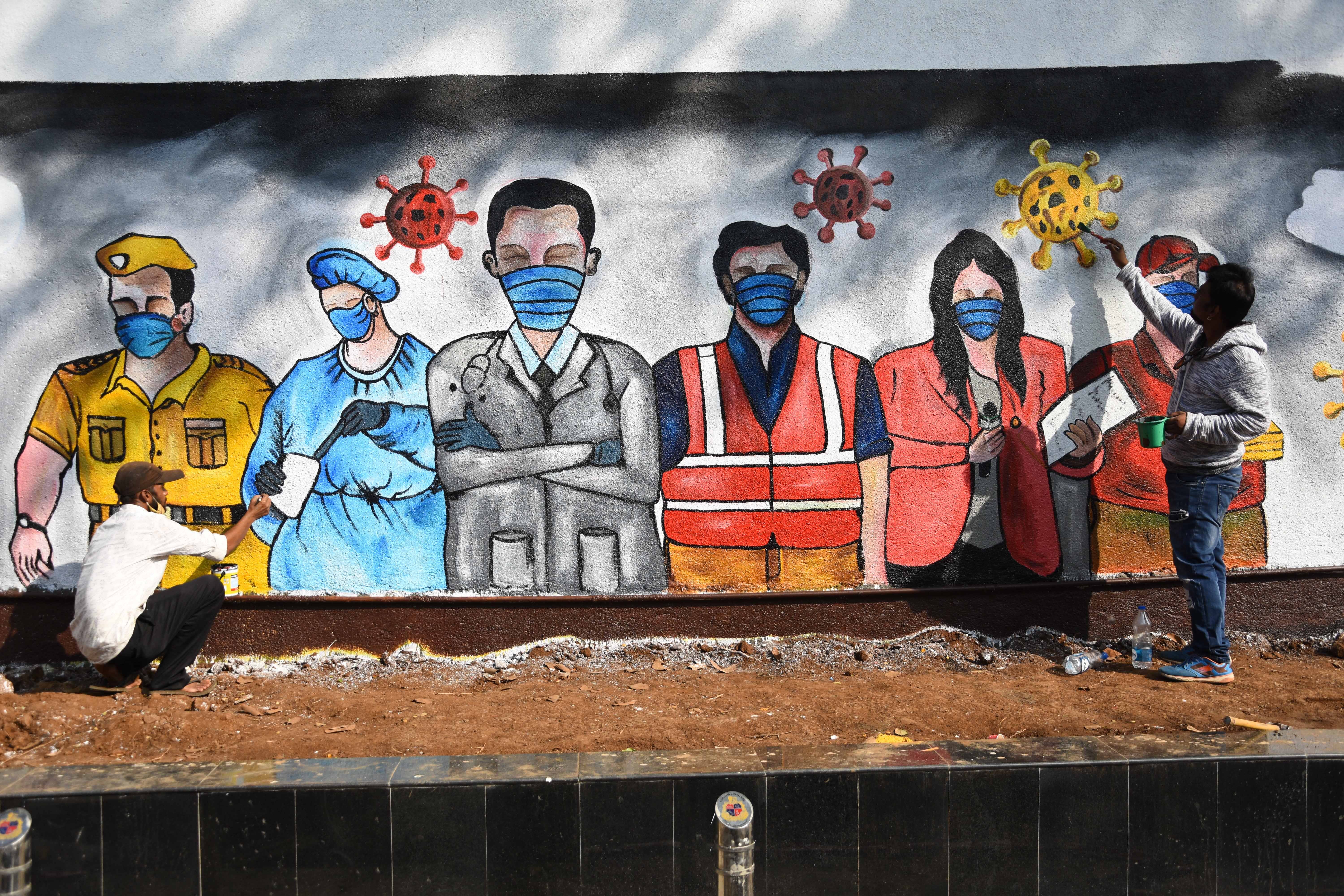
Two men paint graffiti of frontline workers on a wall during the coronavirus pandemic in Mumbai, India.
Imtiyaz Shaikh | Anadolu Agency | Getty Images
Ratings agency S&P Global Ratings said Tuesday that India is on track to recover from a pandemic-led economic contraction by next year.
South Asia’s largest economy could grow 10% in fiscal 2022, the ratings agency predicted in a report. India’s fiscal year begins on April 1 and ends on March 31 in the following year.
“The Indian economy is on track to recover in fiscal 2022,” the report said. “Consistently good agriculture performance, a flattening of the Covid-19 infection curve, and a pickup in government spending are all supporting the economy.”
In 2020, India slipped into a technical recession due to the economic fallout from a lengthy lockdown to slow the spread of the coronavirus outbreak — in aggregate, the country has reported the second-highest number of cases, with over 10.9 million infections.
For the full fiscal 2021, which ends on March 31, India’s economy is expected to shrink 7.7%.
Sovereign outlook
The speed with which the Indian economy recovers from the coronavirus crisis will have “important implications” for the country’s sovereign credit rating, according to S&P.
“This includes the sustainability of the government’s strained fiscal position,” the report said.
In this month’s budget announcement for fiscal 2022, the Indian government focused on spending measures that it said were designed to spur demand and get the economy back on a growth trajectory.
India’s fiscal deficit target for the next fiscal year is around 6.8% of GDP, which is comparatively higher than levels before the pandemic.
While the budget will support recovery due to greater fiscal spending, India’s improving growth prospects are going to be critical for its ability to sustain the higher levels of deficit, according to the S&P report.
The ratings agency estimated that India faces a permanent loss of about 10% of GDP output compared to its pre-pandemic path.
Vaccination campaign crucial
India’s near-term prospects are positive as a declining number of new Covid-19 cases allows for a gradual relaxation of restrictive social measures, according to S&P.
The country last month started the world’s largest mass vaccination campaign against the disease. The effort aims to inoculate as many as 300 million people, most of them frontline workers and high-risk individuals, in the first phase.
“We view Covid vaccinations as critical to India’s recovery over the next few years, and as key to normalizing demand,” the S&P report said, adding, “The emergence of yet more contagious Covid-19 variants with the potential to evade vaccine-derived immunity present a major risk to this recovery.”
Early withdrawal of global fiscal stimulus is another risk to India’s path to recovery.
Banking sector
India’s banking sector is predicted to trail the economic recovery and is likely to show material signs of improvement only in fiscal 2023, S&P said.
Asset quality for Indian banks is set to remain strained as the sharp economic contraction is set to increase the volume of nonperforming loans, according to the ratings agency. Profitability is also set to remain low in the current fiscal year.
While corporate earnings have recovered after the initial shock to the economy from the pandemic, some sectors including construction, real estate development, airlines and tourism continue to struggle due to low activity levels, the report said. Those sectors could potentially become a source of stress for banks.
In this month’s budget, India announced that it will set up an asset reconstruction company that will take over existing bad debt and find ways to manage and dispose them to alternative investment funds. Some experts have said that this can potentially help banks by allowing them to focus on growing their books instead.
Source: CNBC
